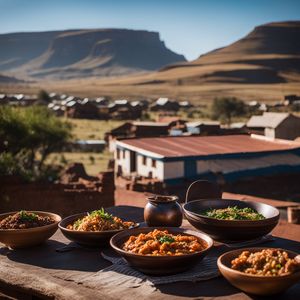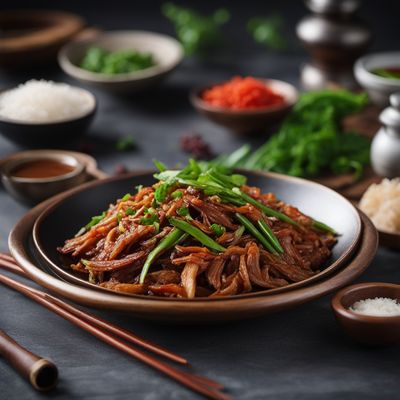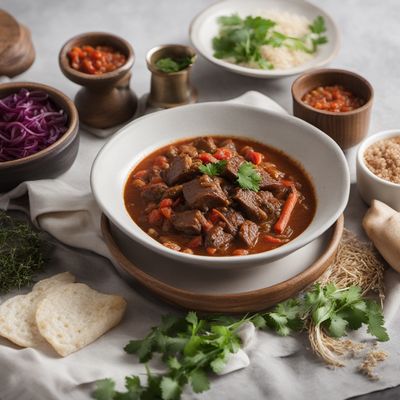
Dish
Serobe
Serobe is made by cleaning and boiling cow intestines until tender. The intestines are then fried with onions, tomatoes, and spices until crispy and golden brown. The dish is usually served with pap, a type of porridge made from maize meal, and a side of vegetables such as spinach or cabbage. Serobe is a flavorful and hearty dish that is perfect for any celebration.
Origins and history
Serobe is a traditional dish in Botswana that has been enjoyed for generations. It is often served at weddings, festivals, and other special occasions as a symbol of hospitality and generosity. Serobe is also commonly served in restaurants and is a favorite among locals and tourists alike.
Dietary considerations
Serobe is not suitable for vegetarians or those with a beef or cow milk allergy. It is also high in fat and cholesterol, so it should be consumed in moderation.
Variations
There are many variations of Serobe, including those that are made with goat or sheep intestines instead of cow intestines. Some versions of Serobe are also made with a spicy tomato sauce or a creamy peanut sauce.
Presentation and garnishing
Serobe is usually served in a bowl or on a plate. It can be garnished with chopped scallions or cilantro for added flavor and color.
Tips & Tricks
To ensure that the intestines are thoroughly cleaned, soak them in water with vinegar and salt for at least an hour before boiling. This will help to remove any impurities and odor. When frying, make sure to use a deep pan and enough oil to ensure that the Serobe is crispy and golden brown.
Side-dishes
Serobe is often served with pap, a type of porridge made from maize meal, and a side of vegetables such as spinach or cabbage. It can also be enjoyed on its own as a snack or appetizer.
Drink pairings
Serobe pairs well with a cold beer or a glass of red wine. The richness of the dish is complemented by the bold flavors of the beer or wine.
Delicious Serobe recipes
More dishes from this category... Browse all »

Anticucho de corazon
Peruvian cuisine

Balkenbrij
Dutch cuisine

Boulfaf
Moroccan cuisine

Bouzellouf
Algerian cuisine

Brački vitalac
Croatian cuisine

Bruckfleisch
Swiss cuisine

Budino di cervella
Italian cuisine

Callos a la Madrileña
Spanish cuisine
More cuisines from this region... Browse all »

Cuisine of Eswatini
Spicy, Savory, Hearty

Cuisine of Lesotho
Spicy, Savory, Hearty

Malagasy cuisine
Spicy, Savory, Aromatic

Malawian cuisine
Spicy, Flavorful, Hearty

Mauritian cuisine
Spicy, Flavorful, Aromatic

Mozambican cuisine
Spicy, Flavorful, Tangy, Savory, Sweet

Namibian cuisine
Bold and unique flavors (combination of sweet, sour, spicy flavors)

Seychellois cuisine
Bold and unique flavors (combination of sweet, sour, spicy flavors)

